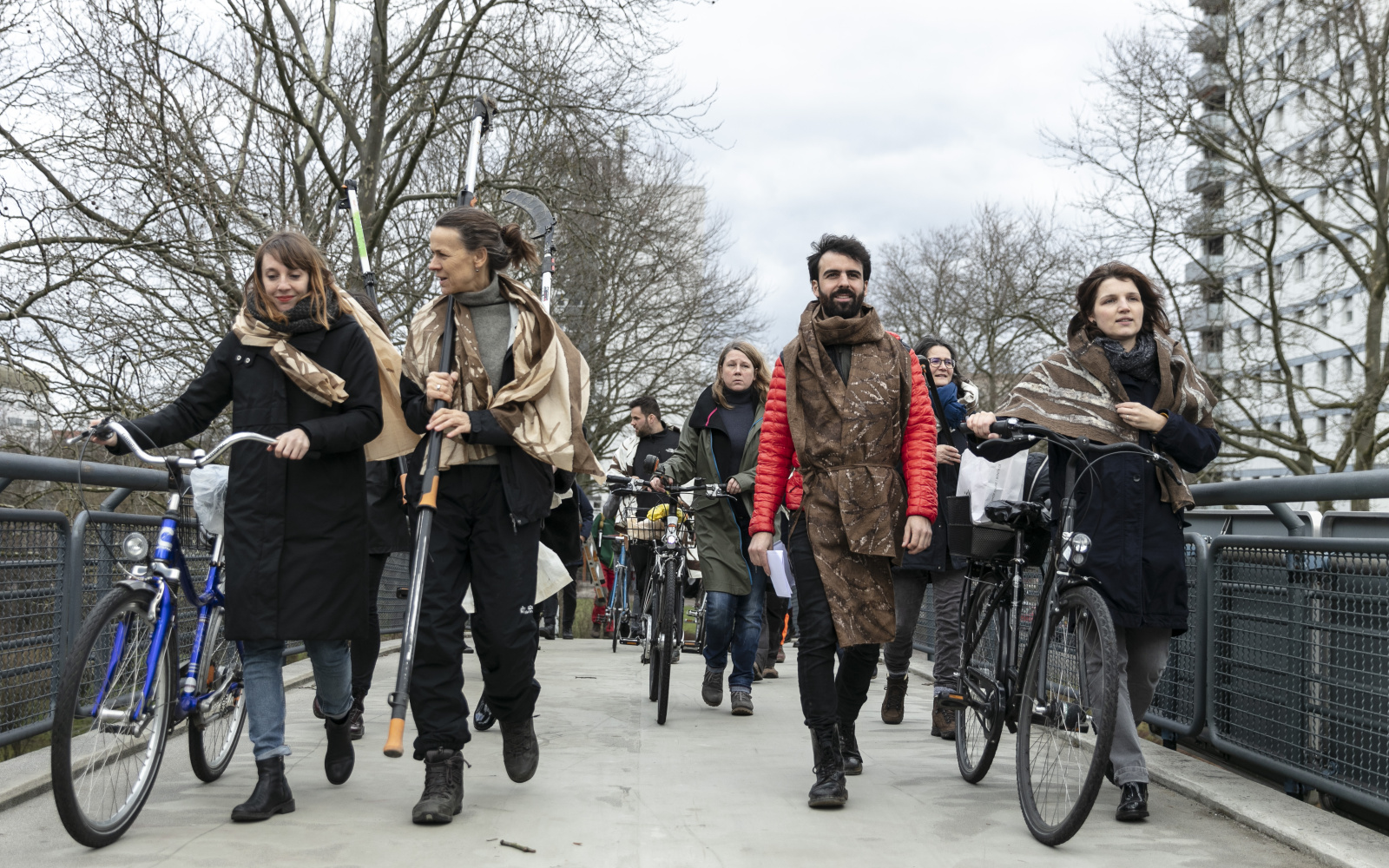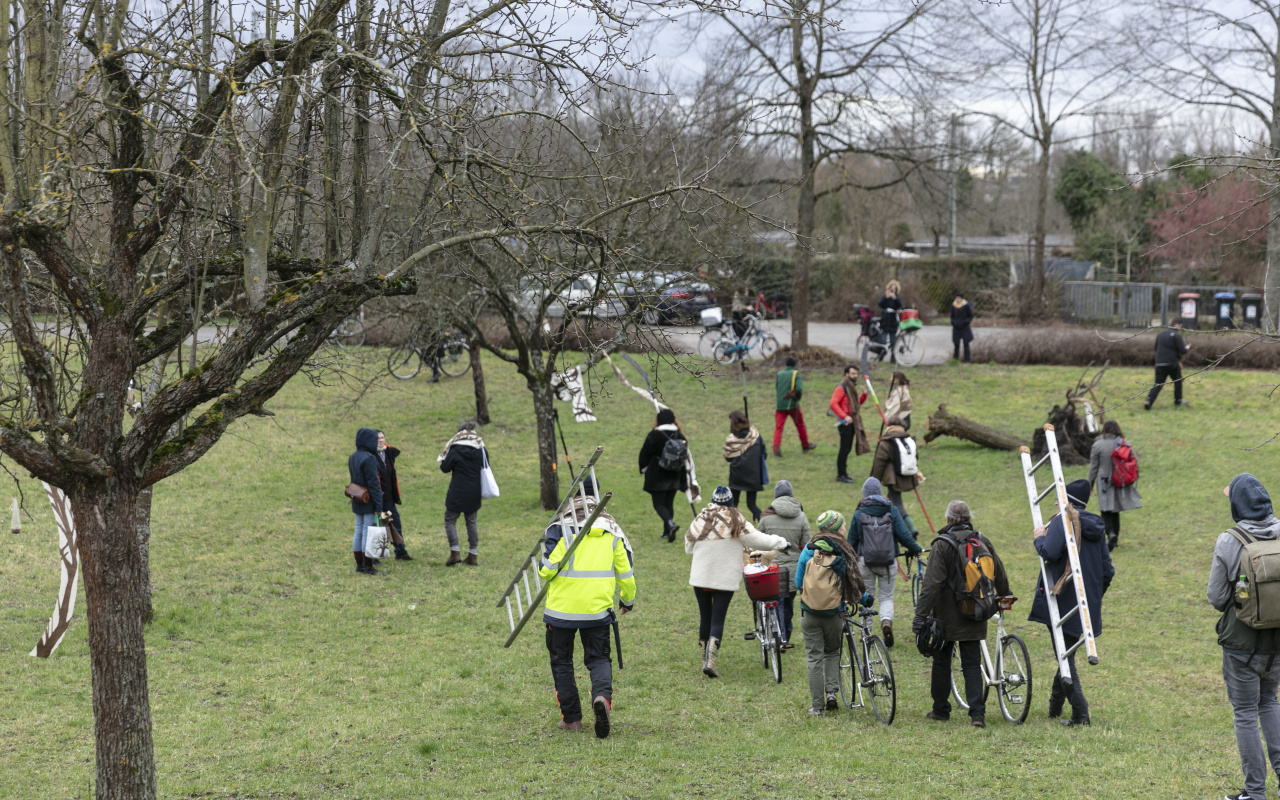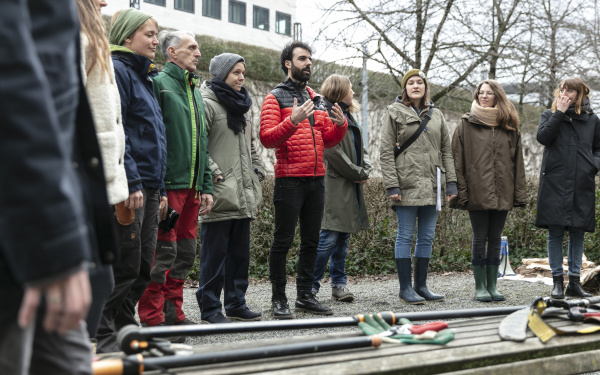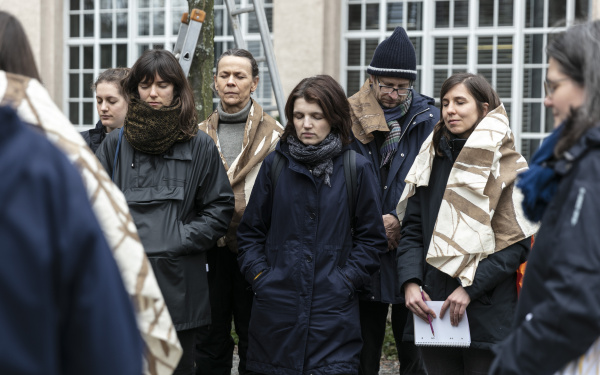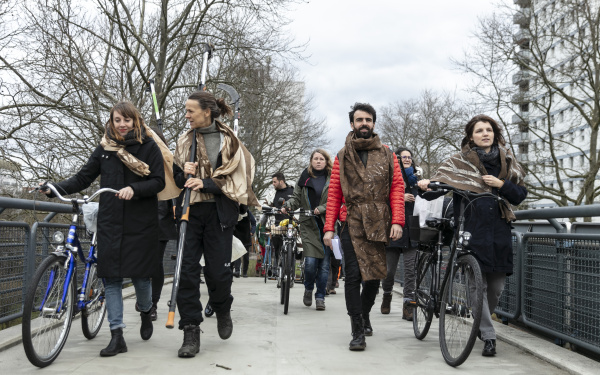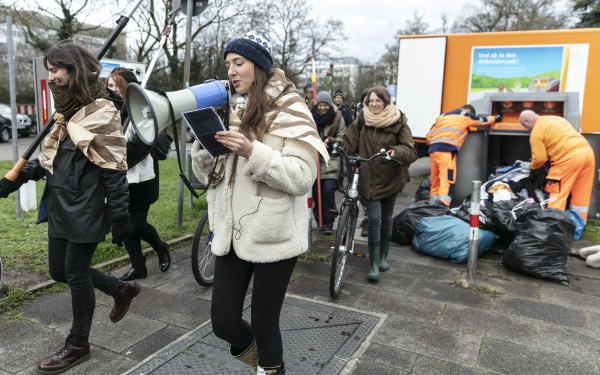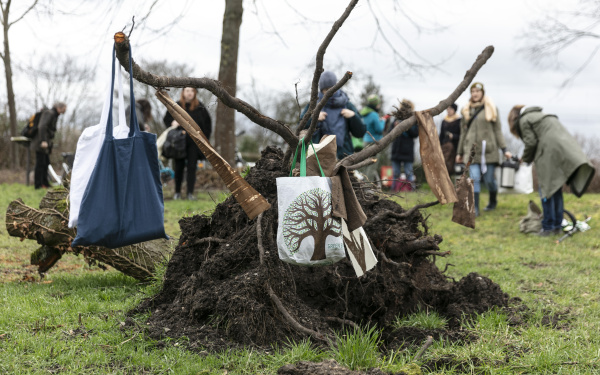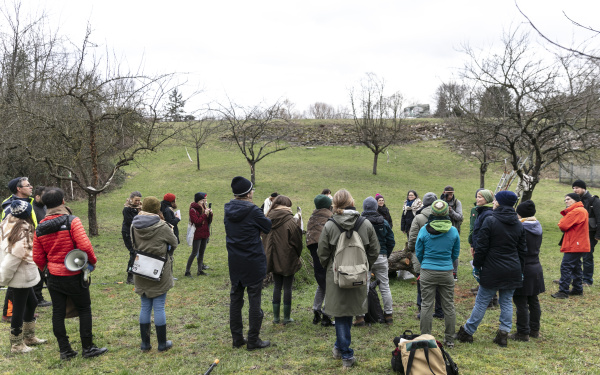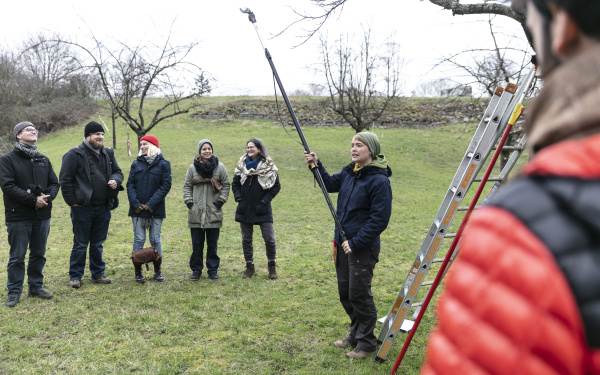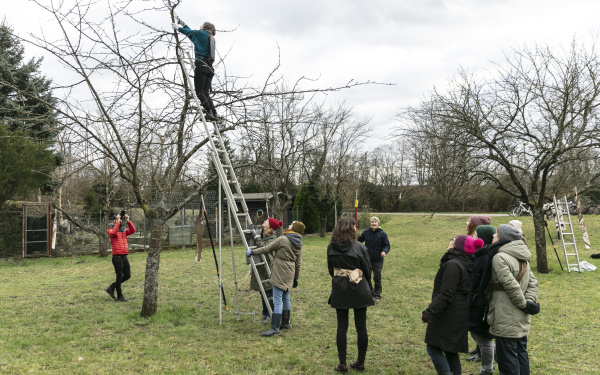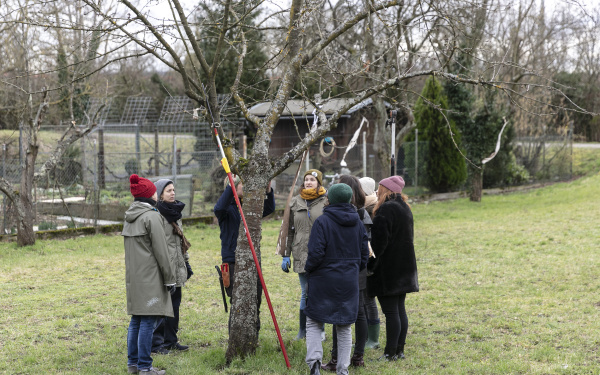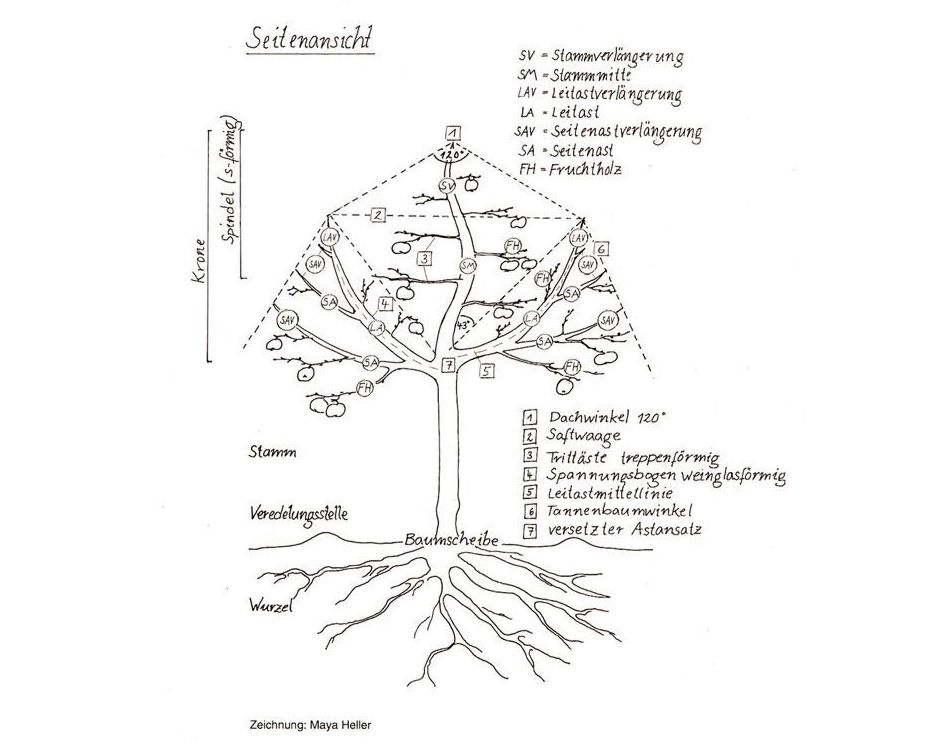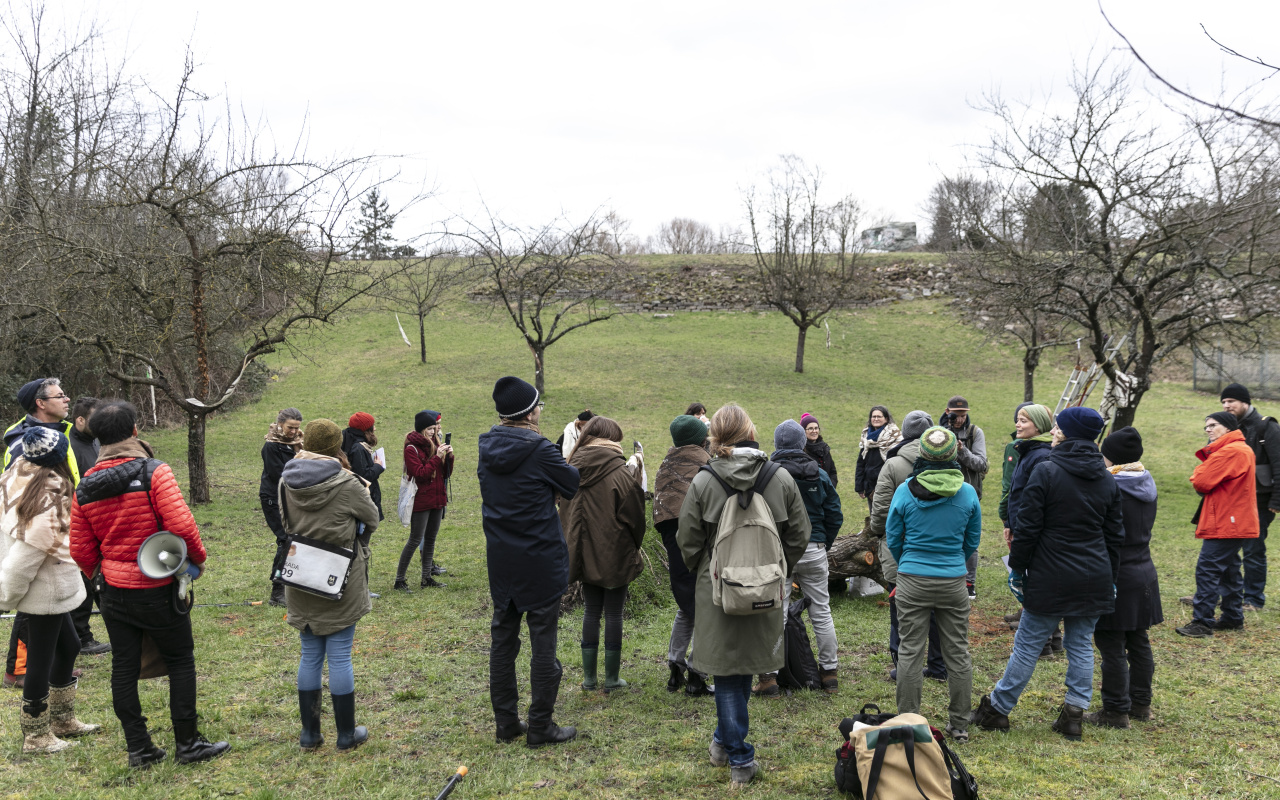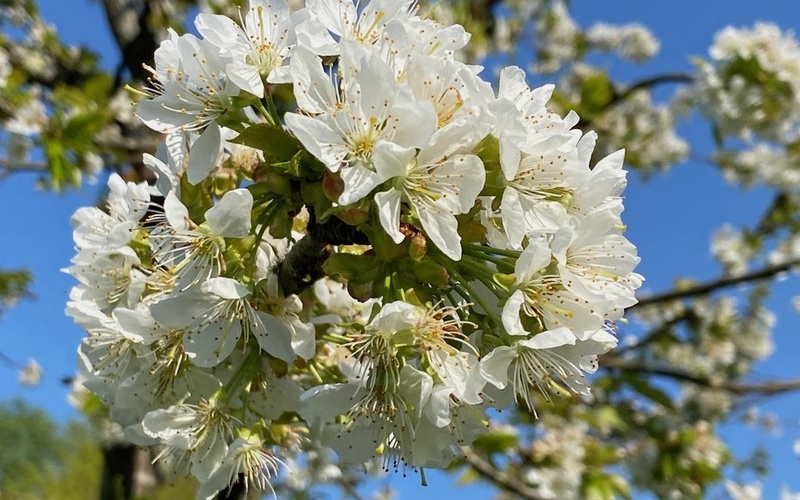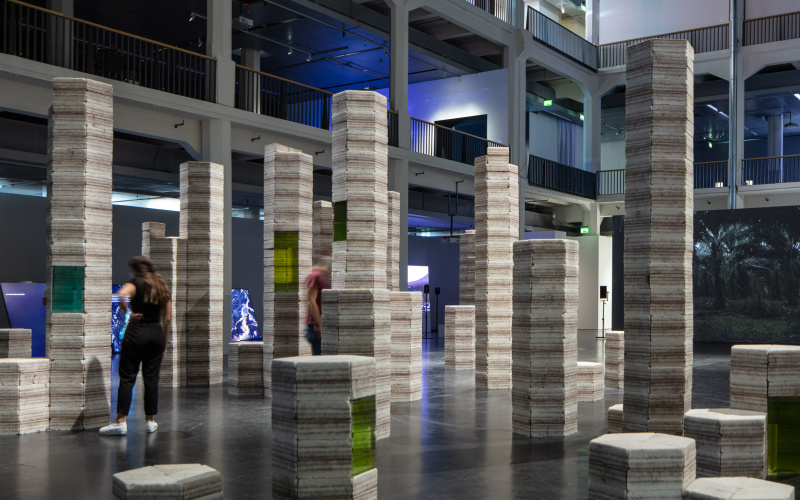To the hotspot of biodiversity
Since January 1, 2020, the ZKM has rented an orchard meadow in its close neighborhood. The idea for this came up during the planning of the exhibition »CRITICAL ZONES. Observatories for Earthly Politics«, which, among other things, investigates the extent to which exhibitions can be designed to be climate-neutral.
BY ALEXA KNAPP
In February, some members of the ZKM staff went out of the office and into nature for a course in tree cutting on the orchard meadow.
What is an orchard meadow?
Orchard meadows are meadows that are managed in an environmentally friendly way, where the use of synthetic treatment agents such as pesticides and fertilizers is completely avoided. Various fruit trees, such as apple, plum and cherry trees are »distributed« over a meadow. Due to their high diversity of species and varieties, orchard meadows are also considered a hotspot of biodiversity in Central Europe.
With rubber boots to the meditative-activist »procession«
Together with the tree-cutting experts Nele Kemper, Reinmund Häck and their team from the Liegenschaftsamt Karlsruhe, the course participants made a pilgrimage to the ZKM orchard. The two artists Stéphane Verlét-Bottéro and Carmen Bouyer accompanied us on the way from the ZKM to the meadow. With their poetic text »The Dream I Had«, they invited us in advance to a meditative journey to connect with nature. In the meadow, the experts from the real estate office introduced us to the art of tree cutting.
Why cut trees?
Regular tree pruning increases the life and health of the tree and the quality of the fruit. If a tree is left uncut, it may collapse under the enormous fruit load. The leading branches provide a break-in cohort for mushrooms and parasites. A good exposure of the fruits caused by pruning offers preventive plant protection.
When to cut trees?
The best time of year for pruning is in the first months of the year, when the structure of the tree and its branch structure is best seen. Winter is therefore the traditional time for pruning fruit trees.
The ideal tree
The experts from the real estate office presented the »ideal« tree: The root of the ideal tree is about as large as its crown. The leaves are necessary to keep the roots alive. In general, the tree should be pruned from top to bottom, three to four leading branches should be preserved, which should be cut as evenly as possible. They determine the contour of the tree.
Why everyone should take a tree cutting course
The afternoon at the tree pruning course proved to be extremely informative, as our work on the orchard meadow taught us how to care for a local ecosystem and also what contribution can be made to the preservation of biodiversity.
The experiment »Care of an orchard meadow« illustrates how we can better care for and preserve our earth - until 2025, the ZKM will bear responsibility for its meadow. It thus creates a realistic reference to the planned thought exhibition »Critical Zones«.
Extremely threatened habitat
For the rich species of meadows there are shocking forecasts. From 1969 to 2009, their numbers have decreased by 50 percent; by 2050 they are expected to be completely lost in Baden-Württemberg. The Liegenschaftsamt Karlsruhe regularly offers free cutting courses for the citizens of Karlsruhe. This is intended to raise the population's awareness of the importance of the sages, as there is a lack of people dedicated to fruit tree care.
Background to the exhibition
The idea of renting a meadow orchard was developed at ZKM in the course of planning the exhibition »CRITICAL ZONES. Horizons of a New Earth Policy«. Starting on May 9, 2020, the exhibition invites visitors to engage with the critical state of our planet in a new way. It encourages us to take a different view of the Earth. The exhibition proposes to see the earth as a network of so-called »critical zones«. The term »critical zone«, borrowed from the earth sciences, refers to the extremely fragile and thin layer of the earth on which life is possible. »Critical Zones« urges us to pay more attention to our planet Earth. The ZKM orchard meadow, where workshops and activities are also planned during the exhibition, offers the opportunity to test this on a small scale.
Author: Alexa Knapp
Category
News Category
- tracks & records
